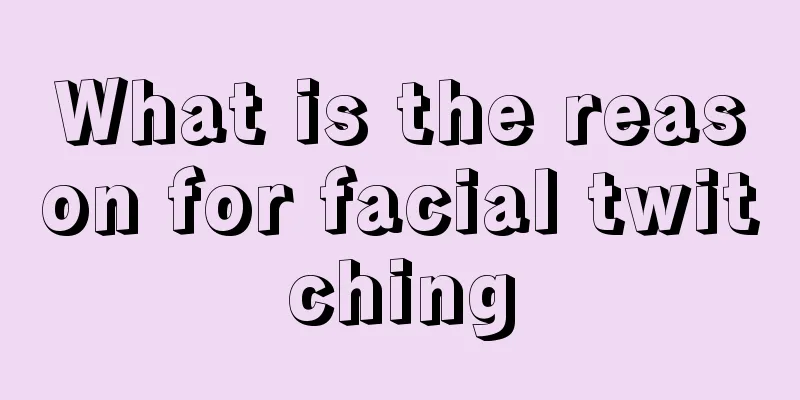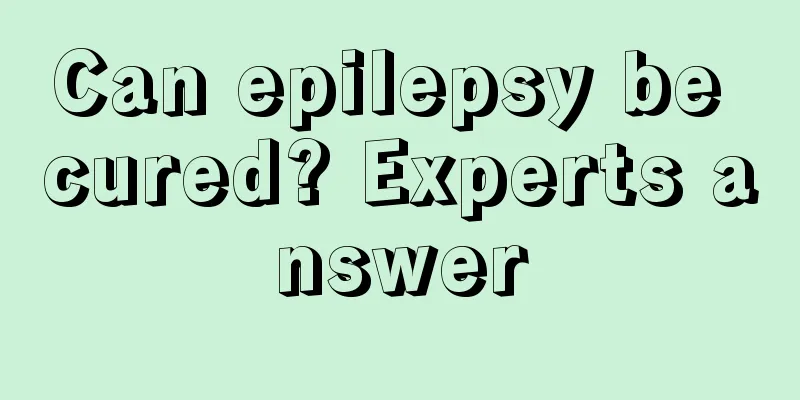What is the reason for facial twitching

|
What causes facial twitches? In fact, if we have facial twitching, it is generally caused by a malfunction of the nervous system. If the facial twitch is just a simple nerve twitch, we don't actually need to worry. But if the facial twitching is caused by a disease, we should be alert. Because once the nerves are necrotic, we will encounter many problems. 1. Facial paralysis Primary facial spasm can also occur in a static state. The spasm will be relieved after a few minutes and is uncontrollable. The facial muscle spasm caused by the sequelae of facial paralysis only occurs during actions such as blinking and raising eyebrows. Therefore, facial paralysis is one of the causes of hemifacial spasm. 2. Nervous Excitement A very small number of patients experience muscle spasm on the affected side after trauma, tumor or surgery. The cause of hemifacial spasm may be a short circuit between the facial nerve and other cranial nerves during its recovery process, causing twitching of facial muscles on one side when other nerves are excited. 3. Facial nerve paralysis Due to the increasing pressure of life, many office workers often stay up late to work overtime. This causes the eye muscles to twitch automatically and continuously, which is mainly caused by facial nerve disorders. Therefore, facial twitching may be caused by facial nerve paralysis. What symptoms are easily confused with facial twitching Common symptoms of facial muscle spasms include facial paralysis, which need to be differentiated from the following symptoms. Facial paralysis: The scientific name is facial nerve paralysis, also known as facial neuritis, Bell's palsy, Hunter syndrome, commonly known as "crooked mouth", "crooked mouth", "hanging line wind", "hanging oblique wind", "facial neuritis", "crooked mouth wind", etc. It is a common disease characterized by motor dysfunction of facial expression muscles. The general symptoms are crooked mouth and eyes. It is a common and frequently occurring disease that is not limited by age or gender. The patient's face is often unable to complete even the most basic movements such as raising eyebrows, closing eyes, puffing cheeks, and pursing lips. In anime, facial paralysis refers to the anime character having no expression at all times. Hemifacial spasm refers to the paroxysmal painless clonic contraction of the muscles innervated by the facial nerve, which often starts from the orbicularis oculi muscle and then spreads to the orbicularis oris muscle, gradually worsening over a few months to a few years. In severe cases, the entire facial muscles and the platysma muscles on the same side may spasm. Severe spasm of the orbicularis oculi muscle may make it impossible to open the eyes. It is relieved when you are quiet, aggravated when you are nervous, tired or excited, and disappears during sleep. Hemifacial spasm presents as electric shock-like, convulsive attacks with intermittent periods, which cannot be controlled by the patient. During an attack, the patient's hemifacial muscles twitch violently and paroxysmically, the eyelids are tightly closed, and the corners of the mouth are crooked. The twitching time can be as short as a few seconds or as long as more than 10 minutes. This can seriously affect vision, language, diet and work. Sometimes it may occur simultaneously with trigeminal neuralgia. In the late stage, the muscles on the affected side become weak and atrophy, and the sense of taste of the front 2/3 of the tongue may be lost. The disease develops slowly and progressively and generally does not resolve spontaneously. Some patients experience paralysis and atrophy of the muscles on the affected side in the late stages, and convulsions also stop. In the early stages of the disease, when facial muscle twitching is limited to the orbicularis oculi muscle, it should be differentiated from functional eyelid spasm, which does not extend to the lower face and is often bilateral. When facial muscle spasms are accompanied by other cranial nerve damage, or limb dysfunction, or involuntary limb movements, intracranial lesions should be considered and the patient needs to go to the hospital for diagnosis and treatment. |
>>: Can hereditary macular degeneration be cured?
Recommend
You should choose the method of treating lymphoma according to your own characteristics
Experts say that the best way to treat lymphoma i...
Can adults drink breast milk?
Breast milk is the only food that a newborn baby ...
The soles of your feet are hot, these foods can be used to treat it
From the perspective of traditional Chinese medic...
What role does the balance of bacteria in the stomach play?
People with healthy stomachs do not have no bacte...
Five indicators of blocking antibodies
The reason why the human body gets disease is not...
The main manifestations of advanced esophageal cancer
Advanced esophageal cancer refers to esophageal c...
A brief discussion on whether gastric cancer is inherited from generation to generation
Nowadays, the number of young people with gastric...
Patients with esophageal cancer can choose particle therapy after electrochemical intervention
Esophageal cancer patients suffer a lot and need ...
What are the dangers of chewing gum frequently?
In modern society, many young people like to chew...
The impact of high fever convulsions on intelligence
High fever is a relatively dangerous disease for ...
What methods can cure fibroids
What methods can cure fibroids? With the increasi...
Can nasal cleaning improve rhinitis?
As the pace of life accelerates, people's str...
Introduction to several skin cancer treatments with better efficacy
With the advancement of modern medical technology...
Sometimes I feel a warm current behind my heels
The foot is a very important part of the human bo...
What are the early symptoms of cerebral hemorrhage?
Cerebral hemorrhage is a common physical disease ...









